Table of Contents
Political Party: Political parties are organized voluntary associations or groupings of people with similar political beliefs who aim to advance national interests and seek to seize power through constitutional methods. They set themselves apart by their internal structures, leaders, programs, and ideologies also influence discussions and decisions on a range of topics that affect many social groups, serving as an essential link between the state, the federal government, and society. In a political system, political parties act as the main link between decision-makers and social processes.
What is the background of Indian political parties?
The Indian political system gained new significance due to a few famous personalities such as B. R. Ambedkar, Subash Chandra Bose, and Mahatma Gandhi. Early in the 1920s and 1930s, when India was under British administration, the political system was formed. To liberate the nation from the British Raj’s bonds, our independence fighters decided to take matters into their own hands.
Political parties began to flourish in India as a result of this trend. While B. R. Ambedkar is justifiably referred to as the Father of Modern India, Mahatma Gandhi is regarded as the Father of the Nation for having given our nation its orientation. B. R. Ambedkar was involved in drafting the Indian constitution. We also have Potti Sreeramulu, the father of linguistic democracy, and Raja Ram Mohan Roy, the father of modern India. These people have had a big impact on India’s political structure.
What distinguishing features do political parties have?
An ideology created by its founding fathers serves as the foundation for the formation of a political party. They are an organization that seeks to put these ideals into practice and improve people’s welfare. In addition, they run in state, local, and national elections.
A political party is made up of its leader, active members, and supporters. A political party’s primary attributes are as follows:
- The party’s members decide to collaborate on shared values.
- The party acts in the community’s best interests.
- They wish to put laws into place that will allow people to elect them to office.
- In times of need, the worker, leader, and supporters are there.
Why is India in need of a political party?
According to what we’ve read, every political party has obligations to society in addition to its own. They are chosen by the people living in that nation and serve as the cornerstone of any democracy. They must put in efforts to advance societal welfare if they hope to be elected. They ought to be prepared to help others. The basic divisions in society that occur regularly are reflected in the political parties.
The following are the primary duties of a political party:
- Contesting the election
- Introducing new initiatives and policies.
- Introducing new legislation
- The winning party in an election forms the ruling party.
- They agree with public opinion.
A democratic nation cannot function without its political parties. Their responsibilities are essential to the efficient operation of a country. Ensuring that the demands of their constituents are satisfied is primarily the responsibility of the elected representatives.
In a democracy, a political party can establish itself and follow national laws. They are not constrained in any way. China operates under a one-party system, which might not be appropriate in any democracy.
Different Kinds of Political Parties
Today’s democratic states have four different kinds of political parties.
- Parties that are reactionary and adhere to outdated political and socioeconomic structures
- Parties that are conservative and support the existing quo
- Liberal parties seek to restructure and alter the current system of governance
- Radical parties that seek to topple the current institutions to establish a new one
Ideologies are often used to categorize political parties. Political scientists have positioned conservative and reactionary parties on the right, liberal and radical parties in the center, and radical parties on the left.
Political Party’s Symbols and Their Flags
Indian Political Party Symbols: Political party symbols and flags hold significant importance in political campaigns and elections. They serve as visual representations of the parties’ ideologies, values, and identities. Here is a brief note on political party symbols and their flags:
| Symbol | Flag | Meaning | Party |
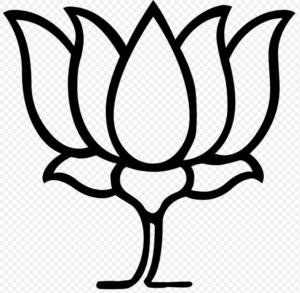 |
 |
Indian lotus: The lotus symbolizes the party’s link to Hinduism. It is also the national flower of India. | Bharatiya Janata Party (BJP) |
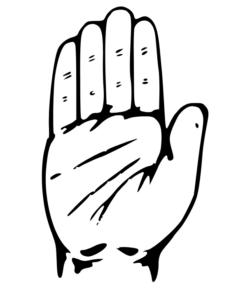 |
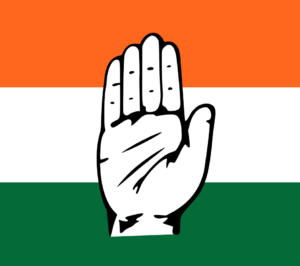 |
Right hand with its palm facing front: The hand symbolizes strength, energy, and unity. | Indian National Congress (INC) |
 |
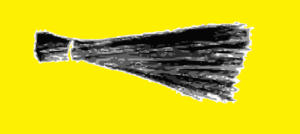 |
Broom: Signifies Dignity of Labour | Aam Aadmi Party
(AAP) |
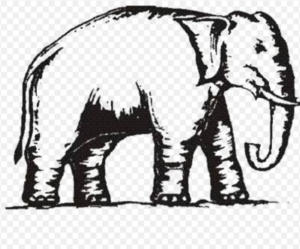 |
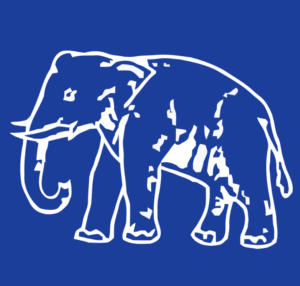 |
Elephant: The elephant represents the strength of the Bahujan community (OBC, SC, ST & religious/linguistic/ethnic minorities). | Bahujan Samaj Party (BSP) |
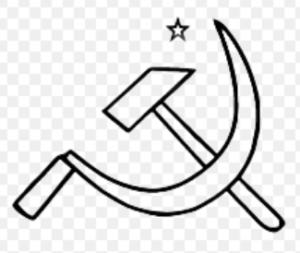 |
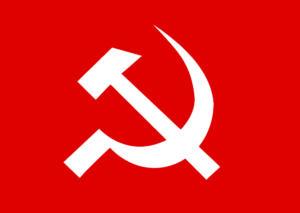 |
Hammer, sickle, and a star: The symbol of the hammer and sickle represents the proletarian solidarity of agricultural and industrial laborers and is also replicated in logos and flags by other communist parties worldwide | Communist Party of India (CPI-M) |
 |
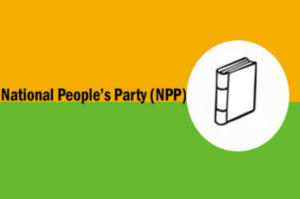 |
Book: It denotes that only literacy and education can empower the weaker sections of society. | National People’s Party (NPP) |
Indian Political Party Symbols
Symbols are linked with Indian political parties and are employed to symbolize the party on ballots and in advertising. Some of the symbols that India’s leading political parties have adopted are listed here.
- Bharatiya Janata Party (BJP): Lotus
- Indian National Congress (INC): Hand
- Aam Aadmi Party (AAP): Broom
- Bahujan Samaj Party (BSP): Elephant
- Samajwadi Party (SP): Bicycle
- Communist Party of India (CPI): Ears of Corn and Sickle
- Nationalist Congress Party (NCP): Clock
- All India Trinamool Congress (AITC): Flowers and Grass
- Shiromani Akali Dal (SAD): Weighing Scale
- Rashtriya Janata Dal (RJD): Hurricane Lamp
It is crucial to remember that these symbols could evolve and that different parties might use different versions of these symbols in various elections or locations. These symbols are assigned to political parties by the Indian Election Commission to make it easier for voters to recognize and discern between them during an election.
Indian Party System
Indian Political Parties: There are three types of party systems in India.
- One-Party System
- Two-Party System
- Multi-Party System
One-Party System
A one-party system is a form of government where the nation is ruled by a single political party with a monopoly on power. Voters have no viable alternatives or a sizable opposing party. Decision-making authority is centralized in the party’s leadership, and the ruling party controls the legislature, the executive branch, and other important institutions. Political plurality and freedoms are frequently restricted, with opposing viewpoints and other parties being silenced. One-party systems are usually associated with authoritarian or totalitarian regimes, in which the governing party aims to preserve control over the state and consolidate power.
Two-Party System
A two-party system of politics is one in which there is a power struggle between two major political parties that control the political landscape. These parties typically have the best odds of winning elections and taking power since they draw a sizable section of the electorate. These two parties generally compete in elections, giving voters an option between two different political philosophies and policy proposals. Though it can also restrict political diversity and marginalize minor parties, the system offers stability and continuity in government. The United States and the United Kingdom are two nations that have two-party systems.
Multi-Party System
A multi-party system is a popular type of governance in which the government is established by coalitions of three or more parties. A coalition government is formed when several parties get together if no party wins a parliamentary majority. Multiparty systems are adopted by nations such as India.
List of Political Parties in India
There are numerous political parties in India, representing diverse ideologies, regional interests, and social groups. Here is a list of some prominent political parties in India:
- Bharatiya Janata Party (BJP)
- Indian National Congress (INC)
- Aam Aadmi Party (AAP)
- Bahujan Samaj Party (BSP)
- Communist Party of India (CPI)
- Communist Party of India (Marxist) (CPI-M)
- Nationalist Congress Party (NCP)
- All India Trinamool Congress (AITC)
- Samajwadi Party (SP)
- Rashtriya Janata Dal (RJD)
- Shiv Sena
- Telugu Desam Party (TDP)
- Biju Janata Dal (BJD)
- Janata Dal (United) (JDU)
- Dravida Munnetra Kazhagam (DMK)
- All India Anna Dravida Munnetra Kazhagam (AIADMK)
- Shiromani Akali Dal (SAD)
- Telangana Rashtra Samithi (TRS)
- Yuvajana Sramika Rythu Congress Party (YSRCP)
- National Conference (NC)
This is not an exhaustive list, as there are numerous other political parties at both the national and regional levels in India. The political landscape is dynamic, with new parties emerging and alliances forming for various political reasons.
Role of Regional Political Parties
Regional political parties play a significant role in Indian politics and have a considerable impact on the country’s governance. Here are some key roles and contributions of regional political parties:
- Representation of Regional Interests: Regional parties primarily focus on representing the specific interests and aspirations of a particular state or region. They advocate for issues that are of particular relevance and importance to their respective regions, such as regional development, language and cultural preservation, resource allocation, and regional autonomy.
- Regional Identity and Empowerment: Regional parties often serve as a platform for promoting and safeguarding the cultural, linguistic, and identity-based interests of their respective regions. They provide a voice and representation to marginalized and underrepresented communities, giving them a sense of empowerment and political participation.
- Regional Development and Governance: Regional parties prioritize the development and welfare of their specific regions. They advocate for region-specific policies, infrastructure development, and allocation of resources to address the unique challenges and needs of their regions. Regional parties, when in power, work towards fulfilling regional development agendas and ensuring better governance at the regional level.
- Coalition Politics and Alliance Building: Regional parties frequently play a crucial role in coalition politics, especially at the national level. As national parties often require the support of regional parties to form a government, regional parties leverage their influence to shape national policies and secure benefits for their regions in exchange for their support.
- Balance of Power: Regional parties act as a check and balance against the dominance of national parties. They provide an alternative to voters who may not align with the ideologies or policies of the national parties. Regional parties can influence policy decisions, legislative outcomes, and government formation, thereby maintaining a balance of power in the political landscape.
The presence and influence of regional political parties in India reflect the country’s diverse regional identities, aspirations, and federal structure. They contribute to the overall democratic fabric of the nation by providing a platform for regional representation, amplifying regional issues, and contributing to the overall political discourse and decision-making processes.

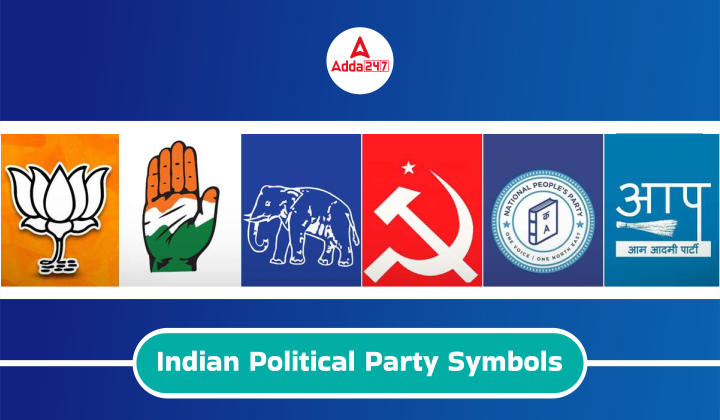

 TSPSC Group 1 Question Paper 2024, Downl...
TSPSC Group 1 Question Paper 2024, Downl...
 TSPSC Group 1 Answer key 2024 Out, Downl...
TSPSC Group 1 Answer key 2024 Out, Downl...
 UPSC Prelims 2024 Question Paper, Downlo...
UPSC Prelims 2024 Question Paper, Downlo...
